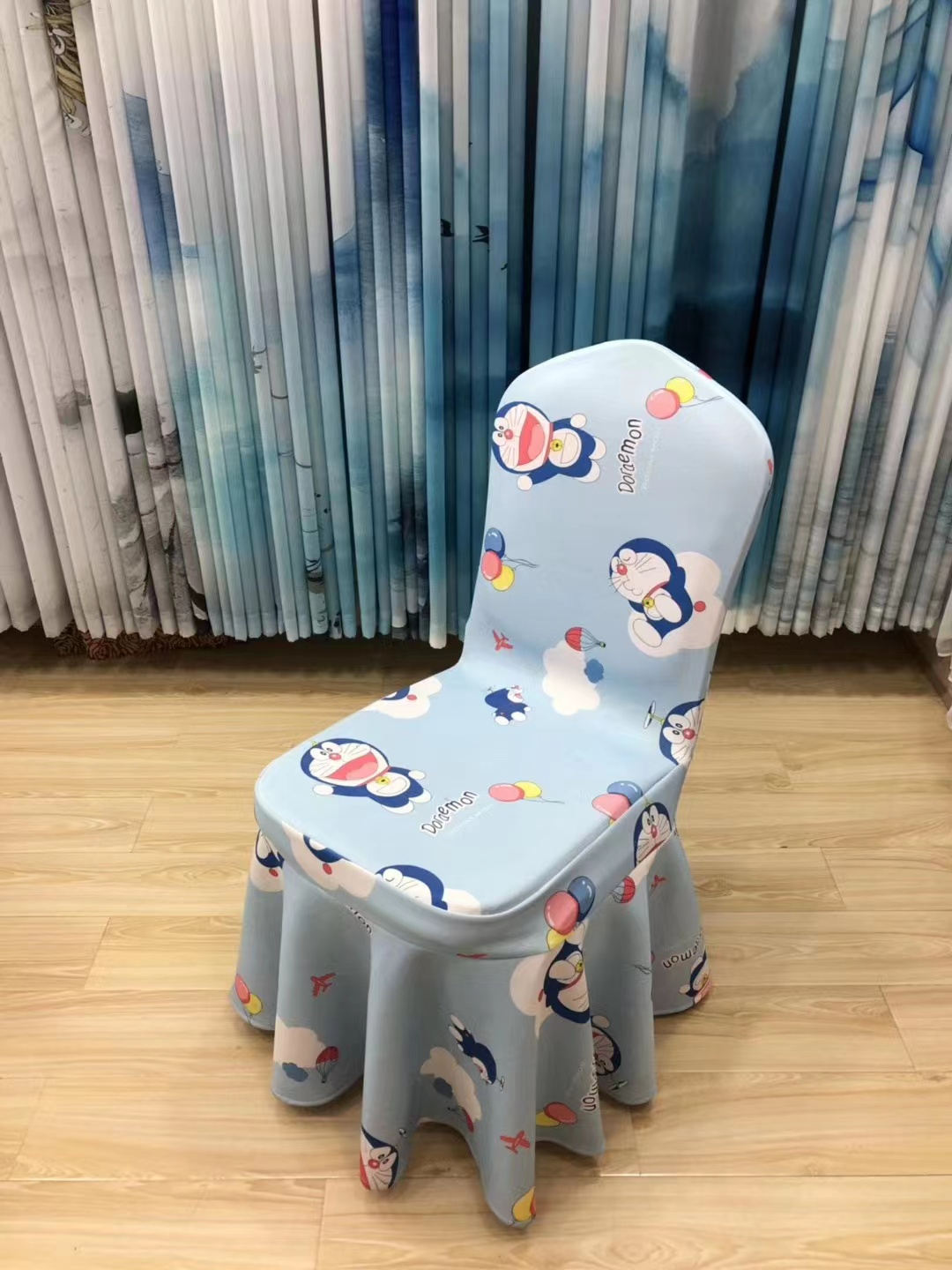濟(jì)南酒店布草:酒店布草日常洗滌需要注意什么事項(xiàng)
時(shí)間:2025-08-08 來(lái)源:http://www.caibozheng.cn/
提到酒店行業(yè),經(jīng)常會(huì)聽(tīng)到酒店布草這一說(shuō)法。其實(shí)酒店布草泛指現(xiàn)代酒店里差不多一切跟“布”有關(guān)的東西,是酒店客部對(duì)客房放置的毛巾、臺(tái)布和床單、枕套等的統(tǒng)稱(chēng)。那么,相比于家中日常用品的洗滌,酒店布草作為公共用品應(yīng)該怎么洗滌呢?具體步驟又有哪些呢?
When it comes to the hotel industry, the term 'hotel linens' is often heard. In fact, hotel linens refer to almost everything related to "cloth" in modern hotels. They are a general term for towels, tablecloths, bed sheets, pillowcases, etc. placed in guest rooms by the hotel staff. So, compared to washing daily household items, how should hotel linens be washed as public goods? What are the specific steps?
酒店布草洗滌步驟
Hotel linen washing steps
Picture
01檢查分類(lèi)
01 Inspection classification
首先需要在洗滌前作分揀分類(lèi)處理。
Firstly, sorting and classification are required before washing.
按顏色分類(lèi):不同的布草處理可能會(huì)引起相互污染,而不同顏色的同類(lèi)布草處理方法也不同。
Classified by color: Different linen treatments may cause mutual pollution, and the treatment methods for similar linen of different colors are also different.
按布草污垢的類(lèi)別分類(lèi):這種分類(lèi)方法是針對(duì)布草在使用過(guò)程中所具有的特殊污垢,一般采用專(zhuān)用的去漬劑處理這些特殊污垢。重垢布草如果是與同類(lèi)的一般污垢程度布草一起作常規(guī)處理,只會(huì)引起大量返洗的浪費(fèi)。
Classified by the type of linen dirt: This classification method is aimed at the special dirt that linen has during use, and generally uses specialized stain removers to treat these special dirt. If heavily soiled linens are treated together with similar general soiled linens, it will only result in a significant amount of backwash waste.
按布草質(zhì)地分類(lèi):如純棉床單、滌棉床單等必須分開(kāi)處理,而地巾應(yīng)特別分開(kāi),單獨(dú)專(zhuān)機(jī)洗滌烘干。
Classified by linen texture: pure cotton bed sheets, polyester cotton bed sheets, etc. must be processed separately, while floor towels should be specially separated and washed and dried separately by a dedicated machine.
02去漬處理
02 Stain removal treatment
應(yīng)用一些化學(xué)藥品并借助一些專(zhuān)業(yè)正確的機(jī)械作用去除常規(guī)水洗與干洗中無(wú)法去掉的污漬。
Apply some chemical drugs and use professional and correct mechanical action to remove stains that cannot be removed in conventional water washing and dry cleaning.
03過(guò)水和預(yù)洗
03 Watering and Pre washing
對(duì)于中,重污垢的洗滌一般要采用沖洗步驟。預(yù)洗是加入適量洗滌劑的一個(gè)預(yù)去污過(guò)程。針對(duì)特別嚴(yán)重的污垢,預(yù)洗則是必選的步驟。預(yù)洗一般可安排在沖洗步驟之后,也可以直接進(jìn)入預(yù)洗過(guò)程。
For the washing of medium and heavy dirt, a rinsing step is generally used. Pre washing is a pre cleaning process that involves adding an appropriate amount of detergent. For particularly severe dirt, pre washing is a necessary step. Pre washing can generally be arranged after the rinsing step or directly enter the pre washing process.
04主洗
04 Main Wash
在適當(dāng)?shù)南匆簼舛取囟取⒆銐虻淖饔脮r(shí)間等因素的結(jié)合下,實(shí)現(xiàn)去污的目的。
Under the combination of appropriate washing solution concentration, temperature, sufficient exposure time, and other factors, the purpose of decontamination can be achieved.
05漂白
05 Bleach
此過(guò)程是主洗去污的補(bǔ)充步驟,主要是去除主洗步驟中不能完全去掉的色素類(lèi)污垢。
This process is a supplementary step to the main washing and cleaning process, mainly to remove pigment dirt that cannot be completely removed in the main washing step.
06漂洗
06 Rinse
漂洗是一個(gè)擴(kuò)散的過(guò)程,用30°C-50°C的水溫與高水位去除織物中殘存含有污垢的洗液成分,從而達(dá)到清洗的目的。
Rinsing is a diffusion process that uses water temperature of 30 ° C-50 ° C and high water level to remove residual detergent components containing dirt from the fabric, thereby achieving the purpose of cleaning.
07過(guò)水和脫水
07 Watering and Dehydration
利用洗衣機(jī)滾筒高速旋轉(zhuǎn)時(shí)產(chǎn)生的離心力,使?jié)L筒內(nèi)織物含水量最大限度的減低。
Utilize the centrifugal force generated by the high-speed rotation of the washing machine drum to minimize the moisture content of the fabric inside the drum.
08過(guò)酸中和
08 Acid Neutralization
洗滌中通常使用的洗滌劑呈堿性,雖然經(jīng)過(guò)多次清洗,亦不能保證沒(méi)有任何堿性成分存在。堿性物的存在對(duì)洗滌物的外觀(guān)、手感都會(huì)造成一定影響,甚至,會(huì)對(duì)人體的皮膚和健康造成不利的影響。而利用酸和堿發(fā)生中和反應(yīng),就可以解決這些問(wèn)題。
The detergent commonly used in washing is alkaline, and although it has been washed multiple times, it cannot be guaranteed that there are no alkaline components present. The presence of alkaline substances can have a certain impact on the appearance and feel of laundry, and even have adverse effects on human skin and health. By utilizing the neutralization reaction between acid and alkali, these problems can be solved.
09上漿
09 sizing
上漿步驟主要針對(duì)餐廳的臺(tái)布、餐巾、某些制服等棉織品或混合纖維織物。上漿后能使被漿織物表面挺括,防止起毛,同時(shí)也在被漿織物表面結(jié)一層漿膜,對(duì)污垢滲透有一定的阻礙作用。
The sizing process mainly targets cotton or mixed fiber fabrics such as tablecloths, napkins, and certain uniforms in restaurants. After sizing, it can make the surface of the fabric being coated firm, prevent fuzzing, and also form a layer of coating on the surface of the fabric, which has a certain hindering effect on the penetration of dirt.
布草常見(jiàn)的洗滌問(wèn)題分析
Analysis of common washing problems of linen
01布草泛黃
01 Yellowing of linen
(1)水沒(méi)有軟化,出現(xiàn)鐵銹漬,使織物泛黃。
(1) The water did not soften and rust stains appeared, causing the fabric to turn yellow.
(2)烘干時(shí)溫度過(guò)高,使織物變黃發(fā)脆。
(2) When drying, the temperature is too high, causing the fabric to turn yellow and brittle.
(3)氯漂本身使織物泛黃,沒(méi)有增白。
(3) Chlorine bleaching itself causes the fabric to turn yellow without whitening.
(4)過(guò)水不清,常此以往,殘留氯水使織物泛黃。
(4) Unclear water flow often leads to residual chlorine water causing the fabric to turn yellow.
02布草泛灰
02 Grasse graying
(1)沒(méi)有中和洗滌用水,鈣皂殘留其中。
(1) Without neutralizing washing water, calcium soap remains in it.
(2)洗滌劑質(zhì)量有問(wèn)題。
(2) There is a problem with the quality of the detergent.
(3)水沒(méi)有經(jīng)過(guò)軟化,產(chǎn)生鈣皂覆蓋在織物表面和內(nèi)部。
(3) The water has not been softened, resulting in calcium soap covering the surface and interior of the fabric.
(4)織物本身性能問(wèn)題。
(4) Performance issues with the fabric itself.
03布草破損
03 Damaged linen
(1)機(jī)械原因:裝載量過(guò)小,引起拉力加大;或者洗滌設(shè)備內(nèi)部有倒刺現(xiàn)象;洗衣桶轉(zhuǎn)速過(guò)大,引起超量摩擦。
(1) Mechanical reasons: Insufficient loading capacity leads to increased tension; Or there may be backstabbing inside the washing equipment; The washing bucket rotates too fast, causing excessive friction.
(2)沒(méi)有把織物分開(kāi)洗滌,混亂一起引起超量摩擦。
(2) Not washing the fabric separately caused excessive friction due to confusion.
(3)漂白劑加入過(guò)量,對(duì)織物腐蝕嚴(yán)重。
(3) Excessive addition of bleach can cause severe corrosion to fabrics.
本文由 濟(jì)南酒店布草 友情奉獻(xiàn).更多有關(guān)的知識(shí)請(qǐng)點(diǎn)擊 http://www.caibozheng.cn/ 真誠(chéng)的態(tài)度.為您提供為全面的服務(wù).更多有關(guān)的知識(shí)我們將會(huì)陸續(xù)向大家奉獻(xiàn).敬請(qǐng)期待. 提到酒店行業(yè),經(jīng)常會(huì)聽(tīng)到酒店布草這一說(shuō)法。其實(shí)酒店布草泛指現(xiàn)代酒店里差不多一切跟“布”有關(guān)的東西,是酒店客部對(duì)客房放置的毛巾、臺(tái)布和床單、枕套等的統(tǒng)稱(chēng)。那么,相比于家中日常用品的洗滌,酒店布草作為公共用品應(yīng)該怎么洗滌呢?具體步驟又有哪些呢?
This article is a friendly contribution from Jinan Hotel Linen For more related knowledge, please click http://www.caibozheng.cn/ Sincere attitude To provide you with comprehensive services We will gradually contribute more relevant knowledge to everyone Coming soon. When it comes to the hotel industry, the term 'hotel linens' is often heard. In fact, hotel linens refer to almost everything related to "cloth" in modern hotels. They are a general term for towels, tablecloths, bed sheets, pillowcases, etc. placed in guest rooms by the hotel staff. So, compared to washing daily household items, how should hotel linens be washed as public goods? What are the specific steps?
酒店布草洗滌步驟
Hotel linen washing steps
01檢查分類(lèi)
01 Inspection classification
首先需要在洗滌前作分揀分類(lèi)處理。
Firstly, sorting and classification are required before washing.
按顏色分類(lèi):不同的布草處理可能會(huì)引起相互污染,而不同顏色的同類(lèi)布草處理方法也不同。
Classified by color: Different linen treatments may cause mutual pollution, and the treatment methods for similar linen of different colors are also different.
按布草污垢的類(lèi)別分類(lèi):這種分類(lèi)方法是針對(duì)布草在使用過(guò)程中所具有的特殊污垢,一般采用專(zhuān)用的去漬劑處理這些特殊污垢。重垢布草如果是與同類(lèi)的一般污垢程度布草一起作常規(guī)處理,只會(huì)引起大量返洗的浪費(fèi)。
Classified by the type of linen dirt: This classification method is aimed at the special dirt that linen has during use, and generally uses specialized stain removers to treat these special dirt. If heavily soiled linens are treated together with similar general soiled linens, it will only result in a significant amount of backwash waste.
按布草質(zhì)地分類(lèi):如純棉床單、滌棉床單等必須分開(kāi)處理,而地巾應(yīng)特別分開(kāi),單獨(dú)專(zhuān)機(jī)洗滌烘干。
Classified by linen texture: pure cotton bed sheets, polyester cotton bed sheets, etc. must be processed separately, while floor towels should be specially separated and washed and dried separately by a dedicated machine.
02去漬處理
02 Stain removal treatment
應(yīng)用一些化學(xué)藥品并借助一些專(zhuān)業(yè)正確的機(jī)械作用去除常規(guī)水洗與干洗中無(wú)法去掉的污漬。
Apply some chemical drugs and use professional and correct mechanical action to remove stains that cannot be removed in conventional water washing and dry cleaning.
03過(guò)水和預(yù)洗
03 Watering and Pre washing
對(duì)于中,重污垢的洗滌一般要采用沖洗步驟。預(yù)洗是加入適量洗滌劑的一個(gè)預(yù)去污過(guò)程。針對(duì)特別嚴(yán)重的污垢,預(yù)洗則是必選的步驟。預(yù)洗一般可安排在沖洗步驟之后,也可以直接進(jìn)入預(yù)洗過(guò)程。
For the washing of medium and heavy dirt, a rinsing step is generally used. Pre washing is a pre cleaning process that involves adding an appropriate amount of detergent. For particularly severe dirt, pre washing is a necessary step. Pre washing can generally be arranged after the rinsing step or directly enter the pre washing process.
04主洗
04 Main Wash
在適當(dāng)?shù)南匆簼舛取囟取⒆銐虻淖饔脮r(shí)間等因素的結(jié)合下,實(shí)現(xiàn)去污的目的。
Under the combination of appropriate washing solution concentration, temperature, sufficient exposure time, and other factors, the purpose of decontamination can be achieved.
05漂白
05 Bleach
此過(guò)程是主洗去污的補(bǔ)充步驟,主要是去除主洗步驟中不能完全去掉的色素類(lèi)污垢。
This process is a supplementary step to the main washing and cleaning process, mainly to remove pigment dirt that cannot be completely removed in the main washing step.
06漂洗
06 Rinse
漂洗是一個(gè)擴(kuò)散的過(guò)程,用30°C-50°C的水溫與高水位去除織物中殘存含有污垢的洗液成分,從而達(dá)到清洗的目的。
Rinsing is a diffusion process that uses water temperature of 30 ° C-50 ° C and high water level to remove residual detergent components containing dirt from the fabric, thereby achieving the purpose of cleaning.
07過(guò)水和脫水
07 Watering and Dehydration
利用洗衣機(jī)滾筒高速旋轉(zhuǎn)時(shí)產(chǎn)生的離心力,使?jié)L筒內(nèi)織物含水量最大限度的減低。
Utilize the centrifugal force generated by the high-speed rotation of the washing machine drum to minimize the moisture content of the fabric inside the drum
08過(guò)酸中和
08 Acid Neutralization
洗滌中通常使用的洗滌劑呈堿性,雖然經(jīng)過(guò)多次清洗,亦不能保證沒(méi)有任何堿性成分存在。堿性物的存在對(duì)洗滌物的外觀(guān)、手感都會(huì)造成一定影響,甚至,會(huì)對(duì)人體的皮膚和健康造成不利的影響。而利用酸和堿發(fā)生中和反應(yīng),就可以解決這些問(wèn)題。
The detergent commonly used in washing is alkaline, and although it has been washed multiple times, it cannot be guaranteed that there are no alkaline components present. The presence of alkaline substances can have a certain impact on the appearance and feel of laundry, and even have adverse effects on human skin and health. By utilizing the neutralization reaction between acid and alkali, these problems can be solved
09上漿
09 sizing
上漿步驟主要針對(duì)餐廳的臺(tái)布、餐巾、某些制服等棉織品或混合纖維織物。上漿后能使被漿織物表面挺括,防止起毛,同時(shí)也在被漿織物表面結(jié)一層漿膜,對(duì)污垢滲透有一定的阻礙作用。
The sizing process mainly targets cotton or mixed fiber fabrics such as tablecloths, napkins, and certain uniforms in restaurants. After sizing, it can make the surface of the fabric being coated firm, prevent fuzzing, and also form a layer of coating on the surface of the fabric, which has a certain hindering effect on the penetration of dirt.
布草常見(jiàn)的洗滌問(wèn)題分析
Analysis of common washing problems of linen
01布草泛黃
01 Yellowing of linen
(1)水沒(méi)有軟化,出現(xiàn)鐵銹漬,使織物泛黃。
(1) The water did not soften and rust stains appeared, causing the fabric to turn yellow.
(2)烘干時(shí)溫度過(guò)高,使織物變黃發(fā)脆。
(2) When drying, the temperature is too high, causing the fabric to turn yellow and brittle.
(3)氯漂本身使織物泛黃,沒(méi)有增白。
(3) Chlorine bleaching itself causes the fabric to turn yellow without whitening.
(4)過(guò)水不清,常此以往,殘留氯水使織物泛黃。
(4) Unclear water flow often leads to residual chlorine water causing the fabric to turn yellow.
02布草泛灰
02 Grasse graying
(1)沒(méi)有中和洗滌用水,鈣皂殘留其中。
(1) Without neutralizing washing water, calcium soap remains in it.
(2)洗滌劑質(zhì)量有問(wèn)題。
(2) There is a problem with the quality of the detergent.
(3)水沒(méi)有經(jīng)過(guò)軟化,產(chǎn)生鈣皂覆蓋在織物表面和內(nèi)部。
(3) The water has not been softened, resulting in calcium soap covering the surface and interior of the fabric.
(4)織物本身性能問(wèn)題。
(4) Performance issues with the fabric itself.
03布草破損
03 Damaged linen
(1)機(jī)械原因:裝載量過(guò)小,引起拉力加大;或者洗滌設(shè)備內(nèi)部有倒刺現(xiàn)象;洗衣桶轉(zhuǎn)速過(guò)大,引起超量摩擦。
(1) Mechanical reasons: Insufficient loading capacity leads to increased tension; Or there may be backstabbing inside the washing equipment; The washing bucket rotates too fast, causing excessive friction.
(2)沒(méi)有把織物分開(kāi)洗滌,混亂一起引起超量摩擦。
(2) Not washing the fabric separately caused excessive friction due to confusion.
(3)漂白劑加入過(guò)量,對(duì)織物腐蝕嚴(yán)重。
(3) Excessive addition of bleach can cause severe corrosion to fabrics.
本文由 濟(jì)南酒店布草 友情奉獻(xiàn).更多有關(guān)的知識(shí)請(qǐng)點(diǎn)擊 http://www.caibozheng.cn/ 真誠(chéng)的態(tài)度.為您提供為全面的服務(wù).更多有關(guān)的知識(shí)我們將會(huì)陸續(xù)向大家奉獻(xiàn).敬請(qǐng)期待.
This article is a friendly contribution from Jinan Hotel Linen For more related knowledge, please click http://www.caibozheng.cn/ Sincere attitude To provide you with comprehensive services We will gradually contribute more relevant knowledge to everyone Coming soon.
資訊推薦Information
聯(lián)系我們Information
